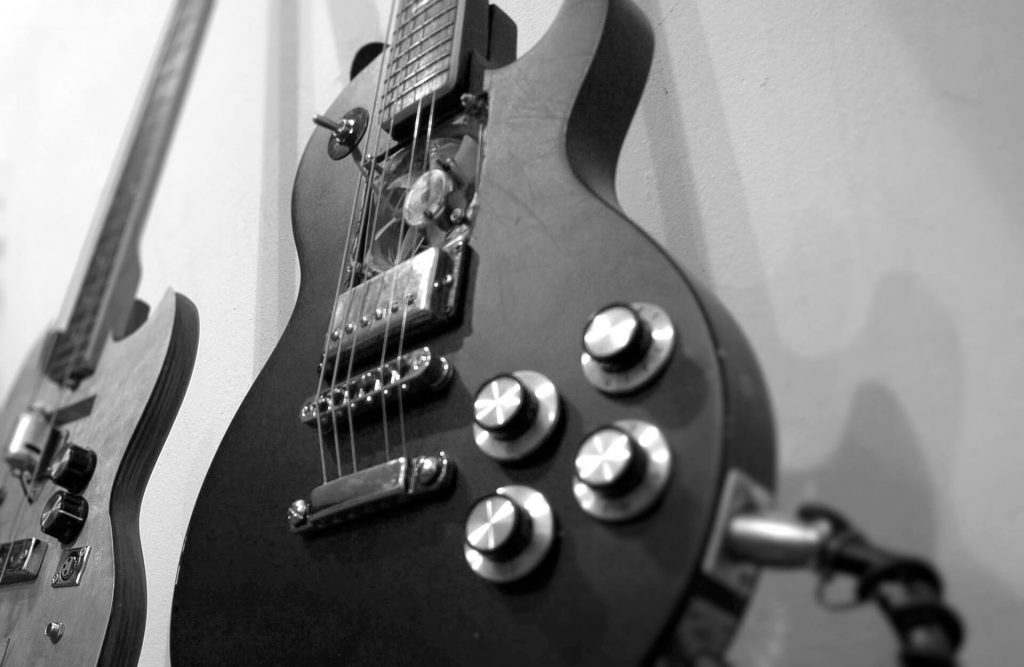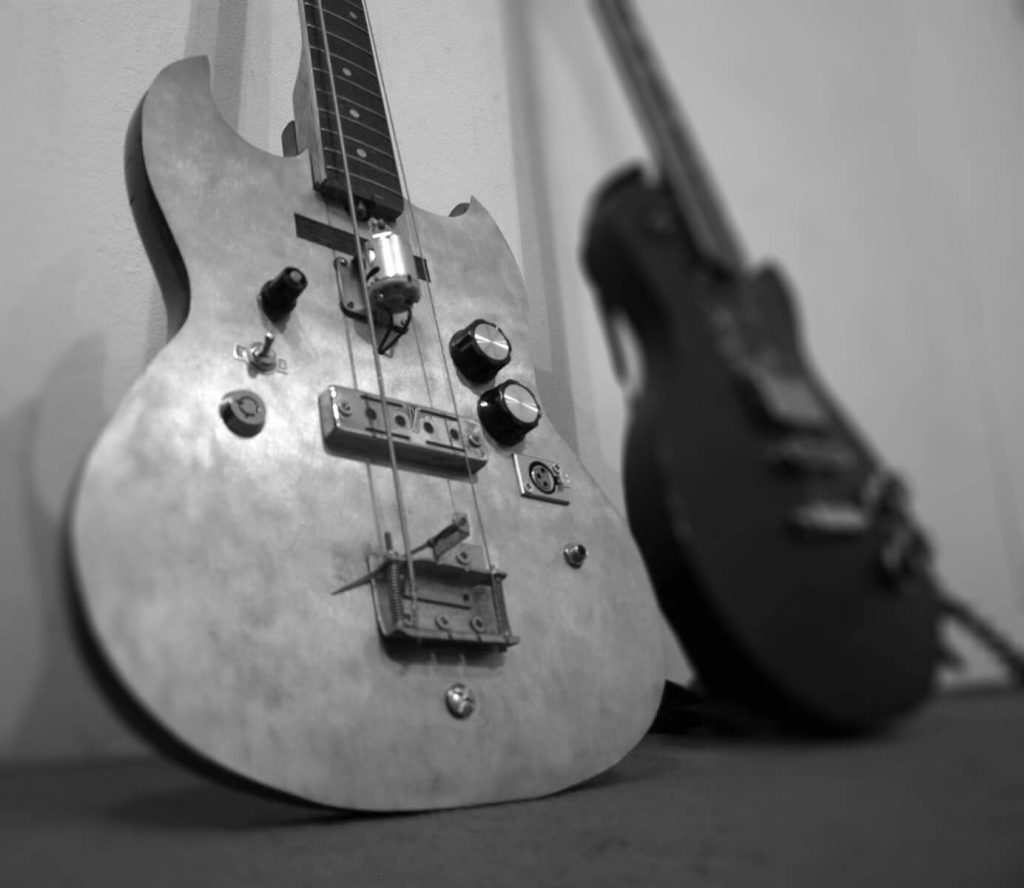Since learning to play guitar in the mid-90s, I’ve had a fascination with taking instruments apart and physically modifying them to produce different sounds.
Experimentation
My first guitar, a 1970s Avon 3403 was unlucky enough to undergo a number of transformations. It was first reinforced and hollowed out to provide space for an on-board effects unit. I took the workings of a phaser pedal and integrated the circuitry into the body of the guitar. This allowed me to adjust effects on stage without having to reach down to a pedal unit.
The Avonator

A few years later, I took the chisel to the Avon again. This time, I replaced the neck pickup with a PC case fan. Combined with a potentiometer and fitted with strips of plastic to strike the strings, this allowed the guitar to auto-strum at whatever speed was required. It became known as The Avonator. I found the best way to play this was to tune it to an open chord and use a guitar slide to add a layer of mechanical, grinding noise to match the chord of the song. With the right hand no longer needed for strumming, it could be used to adjust the strum speed.
The Bassonator

The next project involved an unsuspecting EB-0 style bass guitar. Again, I fitted it with a motor – this time a more powerful 12V unit – mounted parallel to the strings. I removed the two central strings and tuned the two remaining outer strings to D₁ and D₂. When switched on, this alternates on the same note an octave apart. At low speeds, the two notes and individual strikes of the strings are audible, but at higher speeds they blend into a drone, not entirely unlike the EBow but with a more industrial sound. It could be played with a slide, with a finger on the high string and thumb on the low string, or even independently using both hands.
I fitted The Bassonator with a rough steel front panel, which acts as the mounting point for the motor, the power source (provided via shielded XLR cable), control dials, and the all-important key-ignition and toggle switch starter.
Future Plans
It’s a common trope that musicians “go acoustic” when they reach a certain age, and one that I fit in my own way. As the name suggests, The Acousticator will be an electronics-free interpretation of The Avonator. My current thinking is that it will involve the use of a hand-drill…
Another concept is a violin modified with a tape head in the body, and a strip of cassette tape in the bow. This would be used on stage to play a vocal (or other) sample at varying speeds and pitches.
You must be logged in to post a comment.